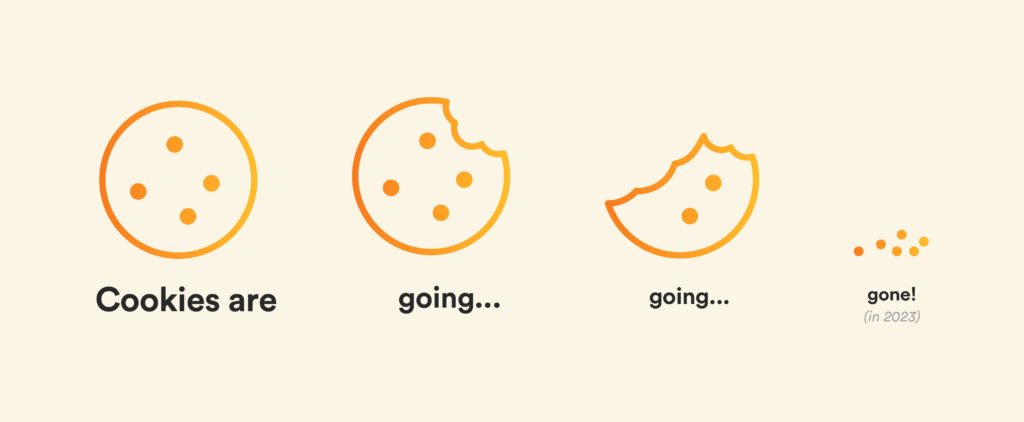It should come as no surprise that third-party cookies will soon be a thing of the past. While Google’s move to block cookies from its Chrome browser has been delayed until late 2023, a number of competing browsers (including Safari, Explorer, and Firefox) have already emptied the cookie jar.
This temporary reprieve is good news for publishers, but 2023 will be here before we know it. And it’s fair to say that the vast majority of publishers are not prepared for a cookie-free future. In fact, a recent survey by ENGINE Media Exchange (EMX) found that while 98% of publishers plan to implement cookie-less solutions, less than half have taken steps in that direction.
To provide some motivation for publishers who are dragging their feet on the cookie conundrum, this blog post will dig into the impact of cookie deprecation and offer some tips to help publishers prepare for their coming demise.
The impact of cookie loss for publishers
There’s no question that today’s programmatic advertising ecosystem runs on third-party data. Cookies are used across the internet to identify and authenticate website visitors – which means that when third-party cookies are turned off in 2023, a huge portion of audiences will suddenly become invisible.
That means it will no longer be possible for publishers and advertisers to:
- Segment an audience list to deliver targeted, personalized ads.
- Evaluate the potential value of ad inventory for pricing and bidding.
- Apply frequency and recency caps to avoid annoying visitors with repeated ads.
- Target and re-target audiences across websites.
- Measure the effectiveness of ads, especially across devices.
The end result is that publishers will be unable to monetize traffic effectively. Recent IAB research found that publishers could lose up to $10 billion in ad revenue when cookies are disabled, and Google reports that publishers stand to lose 50-70% of their revenue without a new approach to audience data.
Ad campaign attribution is another area that’s likely to feel significant impact from cookie loss. Third-party cookies are often used to link ad impressions or views on one site to user actions (like page visits or purchases) on another site. If cookies can no longer be used to connect an ad to the actions it drives, advertisers and publishers will likely be forced to return to last-click attribution – a far less accurate and effective measure of ad success.
Why do third-party cookies have to go?
The short explanation is that consumers are increasingly concerned about their online privacy and demanding greater control over their information. While third-party cookies aren’t inherently dangerous (like malware and viruses), they allow companies to track every website an individual visits and collect a vast amount of data. Consumers have little control over who is collecting their information, who has access to the data, and how it will be used.
It’s important to note that not all cookies are created equal – there is a clear distinction between first-party cookies and third-party cookies (the kind that will be blocked).
- First-party cookies are created by websites that an individual visits directly, in order to collect analytics data and remember preferences that contribute to a good user experience.
- Third-party cookies collect data from a variety of sources that may have no direct relationship with the individual. The data is then aggregated and sold to any number of entities for marketing and retargeting purposes.
3 things publishers can do to prepare for a world without cookies
Living in a post-cookie world may seem daunting, but you don’t have to go it alone. As a publisher, you should rely on your technology partners to help you navigate the coming changes and find new ways to capture and monetize audience data. Here are three areas of opportunity as we move toward a cookie-less future:
1. Shift your focus to first-party data.
Now is the time to dig in and truly understand your audience, to uncover the insights you need to effectively monetize your traffic. Start building your first-party data lake using all the audience data available to you, including email capture, on-site behavior, purchase records, demographic data, and content consumption. A tool like Sovrn Signal can analyze every action a visitor takes on your website, to help you measure and benchmark engagement.
2. Find ways to enrich your proprietary data.
To increase the value of your audience to advertisers, you need to enhance your visitor profiles and increase your “known” audience. Using a tool like Sovrn Data Append, you can supplement your first-party data with off-domain insights and scale your authenticated traffic by matching your audience data with hashed emails, mobile advertising IDs, and other identifiers. In fact, data enrichment with Sovrn can increase your authenticated visitors by up to 10x!
3. Start testing in Safari.
It’s important to remember that browsers like Safari and Firefox – which account for 40% of all online traffic – have already eliminated third-party cookies. This gives publishers the perfect environment for testing out monetization strategies before the advertising ecosystem goes entirely cookie-less. Work with your partners to run the right tests so you can start to build an effective monetization strategy before the 2023 deadline.
With an enriched data stream and a solid strategy that doesn’t rely on third-party cookies, you’ll be better able to package up audience segments for advertisers and communicate their value, so you can maintain – or even increase – your overall ad revenue.
Contact us at sales@sovrn.com to learn more about how our Identity solutions can help you transition to a world without cookies and generate the best possible outcomes from your site traffic.

